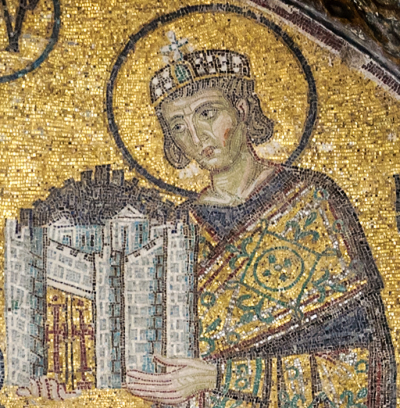Possible 4th Century Church Ruins Unearthed in Rome Near Historic Battle Site, Constantine Victory

What appear to be the ruins of an early Christian church has been unearthed in Rome as electrical technicians were laying cables near the Tiber River.
As reported by Smithsonian.com, the remains of a luxurious building were found in the northern part of the city, 100 yards from the Ponte Milvio, a historic and important bridge from the era of the Roman Empire. The site consists of four rooms dating from the first and fourth centuries A.D., according to Italian news outlet La Repubblica.
Of the four rooms discovered at the dig site, some of the space appears to be a warehouse. Another one of the structures has walls made of brick and red, green, and honey-colored marble floors from Sparta, Egypt, and what is presently Tunisia, indicating that it was used for a special purpose, though the specifics remain unclear.
"It was definitely a building for public use and we think it may have been a place of worship," said Marina Piranomonte, who directed the archaeological dig, in comments to the Telegraph. Others speculate that it was an ornate Roman villa.
Rome's Archaeological Superintendency has called the discovery "an archaeological enigma shrouded in mystery."
The Smithsonian noted that the Roman Empire's earliest churches were constructed during Constantine's reign in the fourth century.
"So while its significance is far from certain, the mysterious building may have been one of Rome's early churches, built during a new era of tolerance for people of the Christian faith."
The location of the ruins is garnering particular interest in that they were found so close to the historic bridge, which is also a site of the famous fourth century battle, known as The Battle of the Milvian Bridge, which Constantine won in October 312 A.D., a victory that paved the way for him to becoming the chief ruler of the Roman Empire and his acceptance of the Christian faith personally and making it the official religion of the land.
As History Today notes, Constantine was a monotheistic pagan, "a devotee of the sun god Sol Invictus, the unconquered sun."
Yet prior to the Milvian Bridge battle, the regional ruler who was soon-to-be total emperor and his army reportedly "saw a cross of light in the sky above the sun with words in Greek that are generally translated into Latin as In hoc signo vinces ('In this sign conquer')."
According to Eusebius of Caesarea, a Christian scholar of the Bible and historian who penned the first biography of Constantine shortly after the emperor's death, the night after he had the vision, he had a dream in which Christ appeared to him and told him "he should use the sign of the cross against his enemies." The dream so moved Constantine that he had the Christian symbol placed on his soldiers' shields.
He attributed his military victory to the God of the Christians.
The following year, Constantine issued the Edict of Milan, which proclaimed that "no one whatsoever should be denied the opportunity to give his heart to the observance of the Christian religion," a stark contrast from years past when Christians were persecuted intensely.
The story of the vision and dream was widely accepted for hundreds of years that followed but is today disputed by other historians.




























